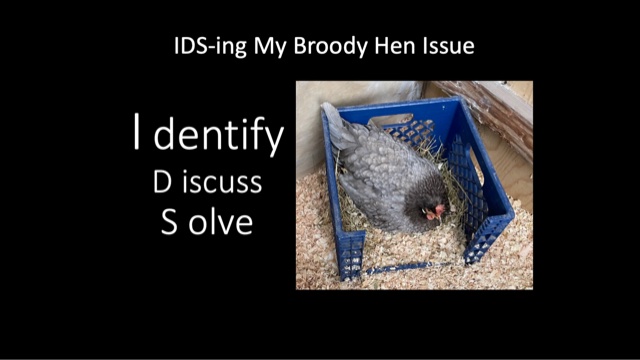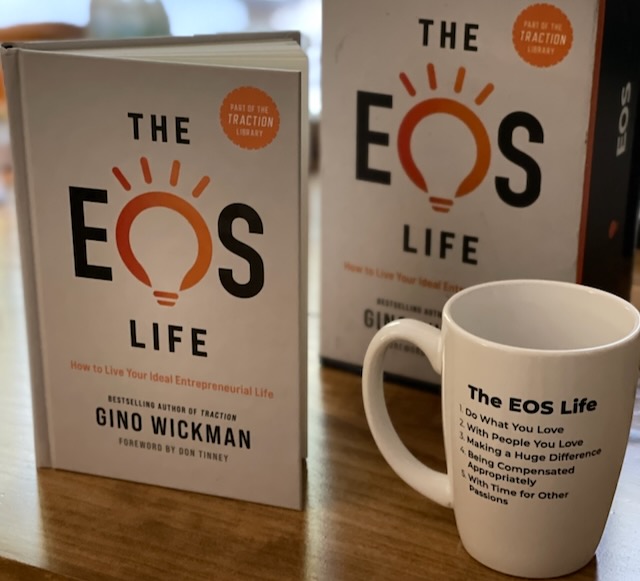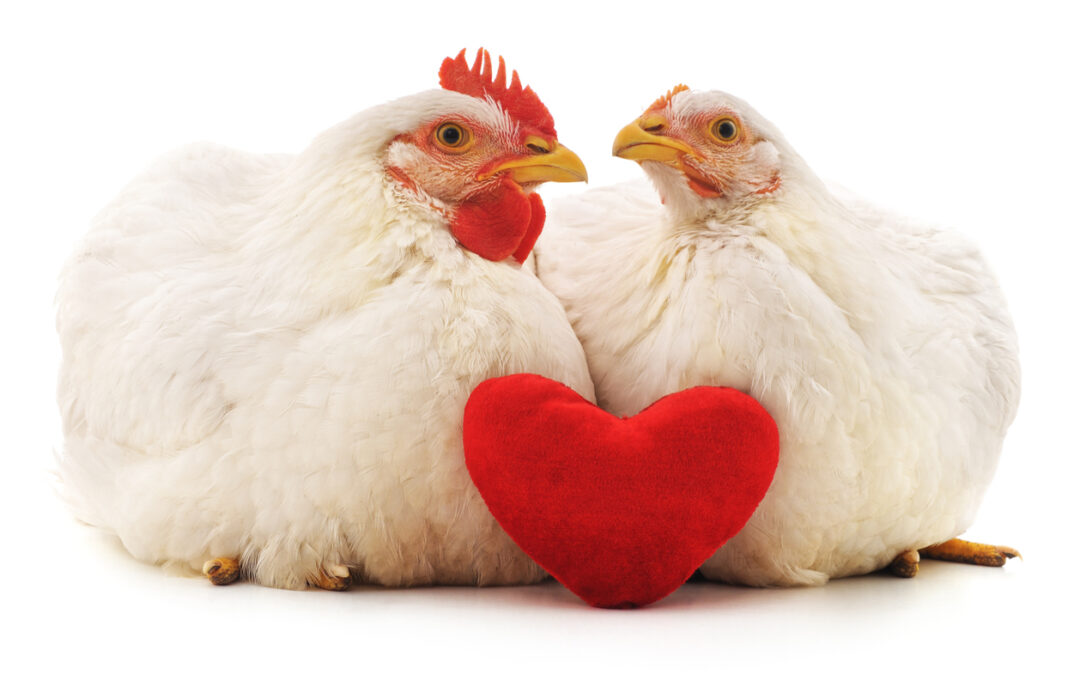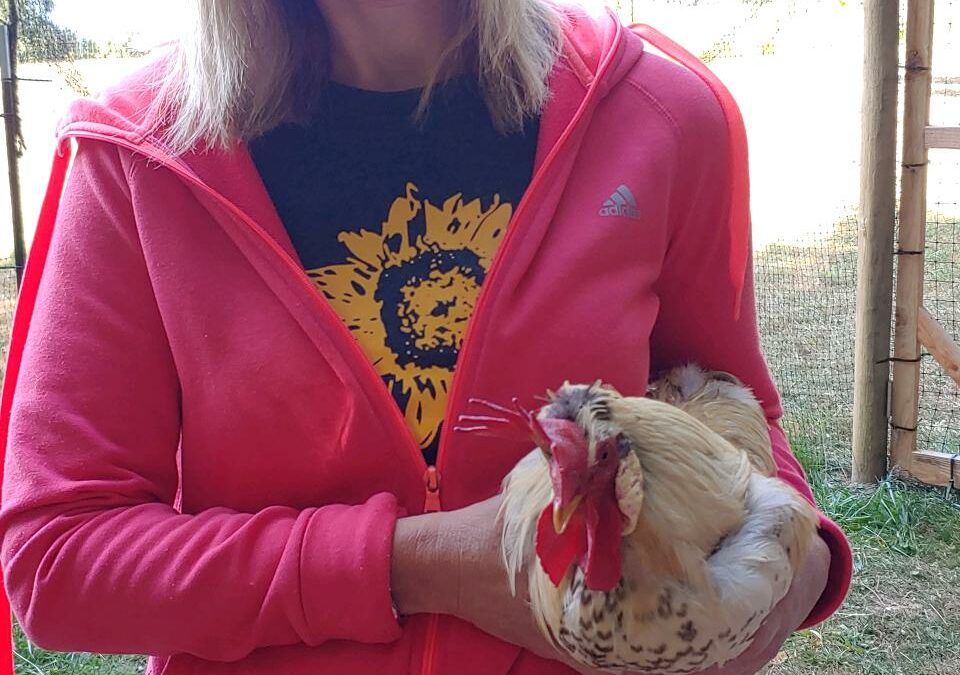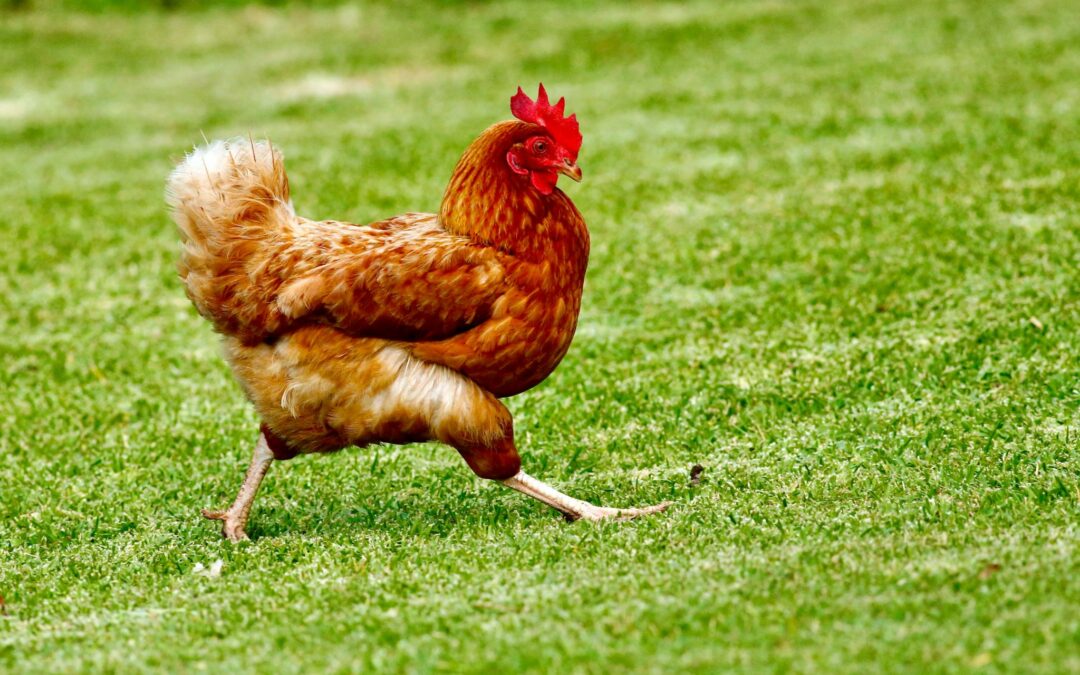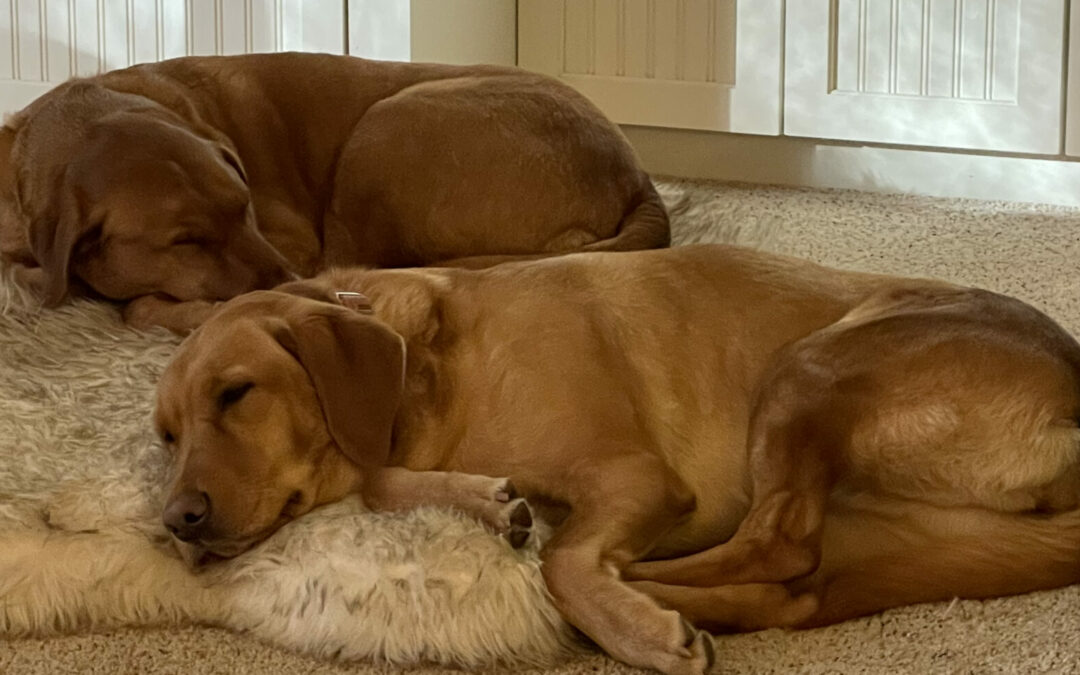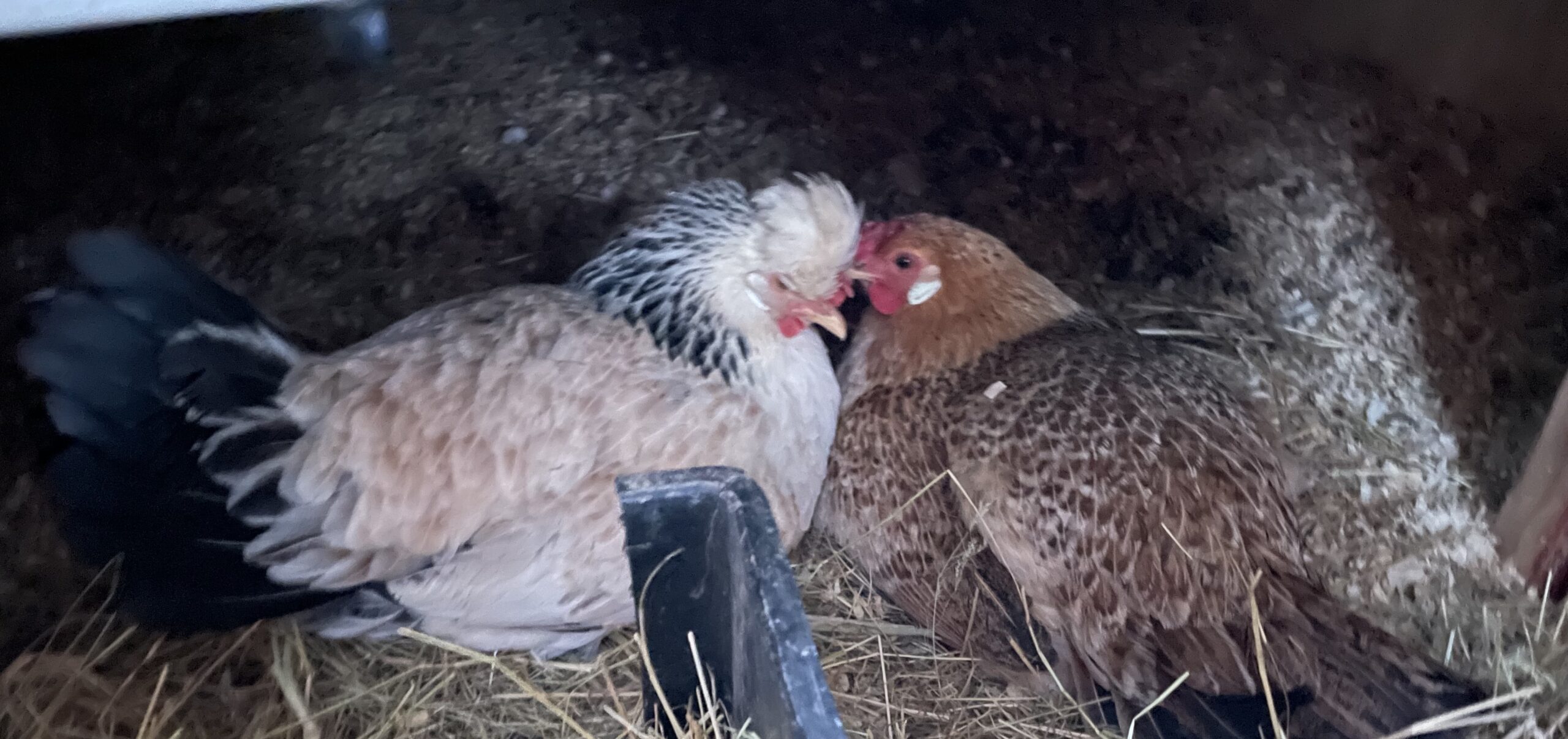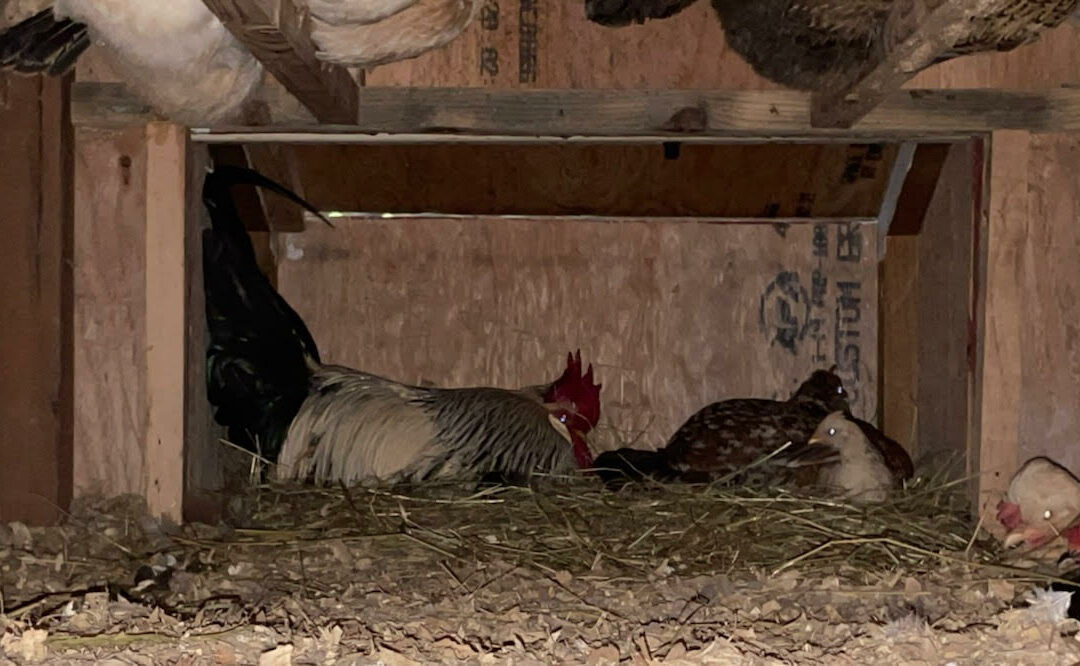
Accountability Chaos
Life in the coop is never dull. After our two broody hens hatched their eggs, another hen decided it was her turn to be broody. Then a fourth hen decided to join her. So, we now have two hens with peeps and two broody hens, and the other three are trying to fend off Hei Hei.
Applying what I learned after my last round of broody hens, I left the hens in the coop and upon reaching 12 eggs (a nice sized clutch), we marked the designated eggs for them to incubate. After that, we removed any new or unmarked eggs. All was fine until we decided it was time to move the 4-week-old peeps and their mamas back into the main coop to make room in the broody hen coop. One mama was happy to roost up in the coop alongside her peep, but the other hen, Sally the Survivor (the lone survivor of the Great Chicken Massacre last May), wanted to keep her peep under her at night.
Sally is feisty hen, so, she kicked the broody hens off their eggs and decided she would sit on the eggs and her peep at the same time. This has caused lots of confusion in the coop, as the broody hens weren’t sure what they should be doing since another hen was sitting on their eggs. This resulted in hens moving the marked eggs to other locations in the coop, rotating hens sitting on the eggs in the nesting box, and at times, no hens sitting on the eggs. We had to throw away four eggs because they had been abandoned in various locations in the coop.
The grand finale came when I went up one night to put them to bed and, as I peered into the coop, the two broody hens were pushed off to the side, Sally was sitting in the nesting box on some eggs with her chick peeking out from under her, and next to her was our rooster, Hei Hei, sitting on the balance of the eggs.
All the confusion occurred because no one was clear on what their role was. Everyone in the coop was “dabbling” in incubating the eggs, but this kept the two hens designated for the role from doing their job.
How often do people in your organization veer outside their accountabilities because they like the work, or perhaps they don’t trust the person accountable to actually do the work? Do you have people stepping in because they see no one is handling something? Or on the flip side, do you have situations where no one takes accountability for something because they assume someone else is handling it?
In a recent EOS session, one of my clients was discussing the lack of a sales pipeline for incoming jobs. When I asked them who was accountable for sales, I got a bunch of blank stares. So I pulled out the accountability chart and used that as the foundation for our discussion. Guess what? It wasn’t crystal clear who was accountable, so everyone on the team assumed someone else was handling it.
Accountability doesn’t mean that one person does all the work. What it means is if you aren’t getting the results you need in a particular part of your business, everyone is clear on who needs to address the issue. If you are missing your sales numbers, the person accountable for sales needs to own this. If you’re struggling with scrap in a particular area of your process, you need to know who is accountable for scrap in that area.
When you are IDS-ing (IDS-ing my Broody Hen Issue), you can use a technique I call “Who Who One Sentence” as a framework for solving accountability issues. Who is Accountable? Who can solve it? In one sentence, what do you need?
The person sitting in a seat on the accountability seat should have the skills, abilities, knowledge, and passion to solve the problem. If not, you might have a people issue.
If chickens can get confused as to who is accountable for sitting on their eggs, imagine how confusing accountability can be in an organization full of humans. If you want to get more of the right things done, start by getting clear on who is accountable for what.
Need help? I’m just a call/email away.

